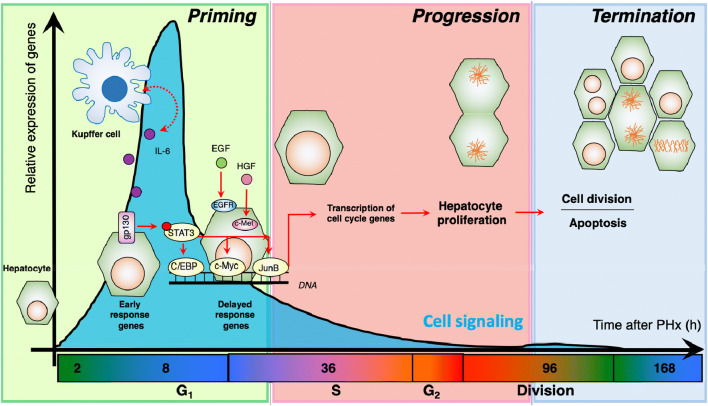Fig. 2.
Regulation of cell cycle by auto and paracrine signaling during liver regeneration. Liver regeneration is a well synchronized process by which the liver recovers in response to acute damage. In the most studied model of liver regeneration, 2/3 of the liver mass is removed which triggers a cascade of activation of signaling pathways within hepatocytes promoting regeneration. The first wave of genes is activated by autocrine and paracrine signals. These transcription factors are known as early response genes of liver regeneration which license the expression of cell cycle genes during the initiation phase of the regenerative process. The second wave of transcription factors, known as delayed response genes of liver regeneration, further promotes cell cycle progression allowing hepatocytes to enter the S-phase of cell cycle. DNA replication is one of the only cellular autonomous processes in hepatocytes, and it always occurs between 32 and 38 h after liver resection, and it is marked by a peak in expression of cell cycle genes, like CDKs and cyclins. After one or two rounds of cell division, most genes that promote cellular proliferation will be reduced in expression and the regenerative process enters the termination phase. The last phase is characterized by a balance of cell division and apoptosis, until the liver reaches the optimal size

